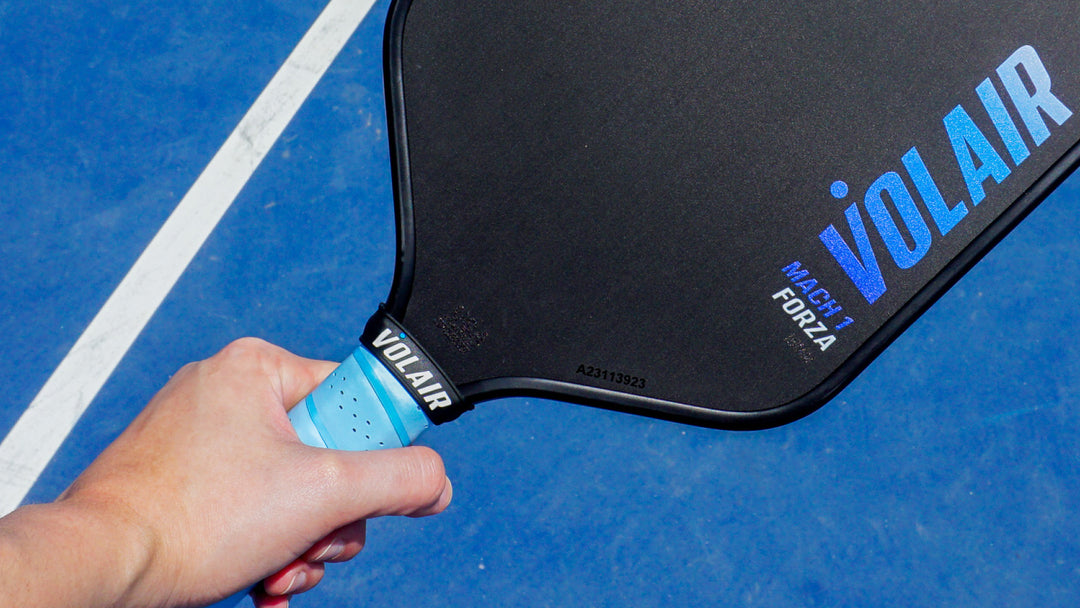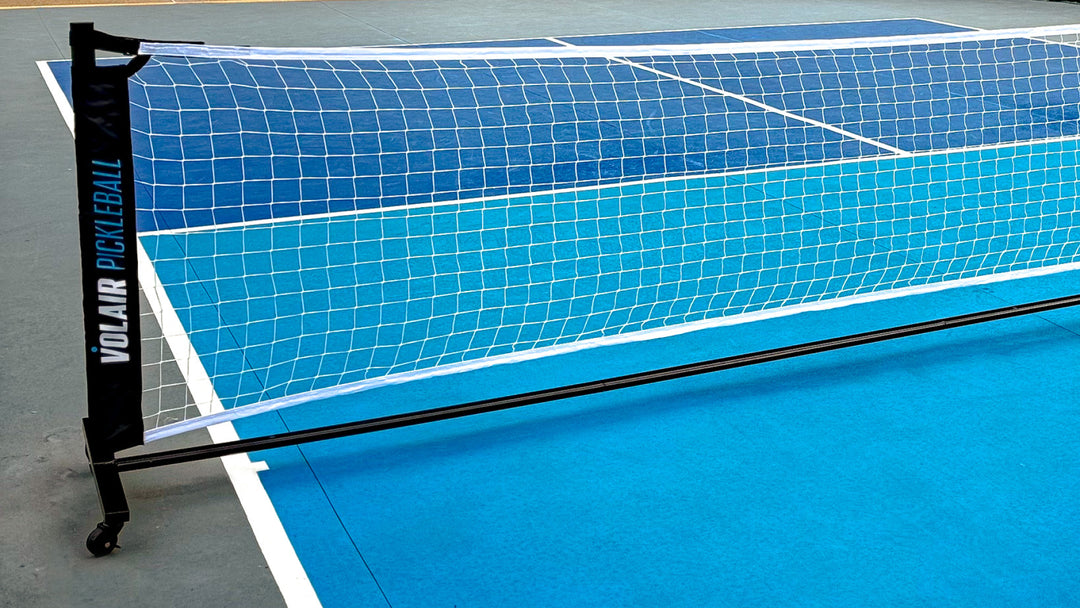A Comprehensive Comparison Between Pickleball and Tennis
Pickleball and tennis are the two most popular racket sports in the world and have continued to gain immense popularity in recent times. Although there are a lot of similarities, each sport has its own unique characteristics.
Tennis, often referred to as the ‘sport of kings’, originated in Europe and has a long and storied history. Its origins can be traced back to medieval times, and it has evolved into the globally recognized sport it is today. Pickleball, on the other hand, is a relatively new sport, emerging in the mid-1960s in the United States. It was invented as a family-friendly game, combining elements of tennis, badminton, and ping pong. Pickleball is now the fastest-growing sport in the nation, with many tennis players switching allegiances due to the quicker learning curve and perceived accessibility of the sport.
Similarities Between Pickleball and Tennis
- Both are played on a court with a net dividing the two sides
- Each sport involves hitting a ball with a racket or paddle to win points
- Both sports demand a good level of hand-eye coordination, strategy, and fitness to succeed.
- Players can engage in singles or doubles play
Key Differences Between Pickleball and Tennis
- Court dimensions
- Equipment
- Rules of play
- Accessibility and learning curve
Why Does Court Size Matter?
First up is the notable court size difference between the two sports. The pickleball court is significantly smaller than a tennis court, measuring 20 feet wide and 44 feet long, with a 7-foot non-volley zone. Many compare the pickleball game and the size of the court to ‘adult ping pong’ as the court is bigger than a ping pong table but significantly smaller than a tennis court. The compact size fosters any emphasis on longer rallies, consistency, and the ability to play the majority of points within the confines of the non-volley zone.

The tennis court is on a much larger scale, measuring 27 feet wide and 78 feet long for singles, extending to 36 feet for doubles. The expansive court demands extensive ground coverage and stamina, particularly during prolonged points. Interestingly the tennis court becomes bigger when playing doubles, whereas the pickleball court dimensions always stay the same.
Due to the smaller court and lower bounce of the ball, pickleball requires more forward movement to the kitchen line. From that position, it is then all about balance and wider steps to the ball with the main focus being on precision and quick reactions to the incoming shot. With its slower pace, pickleball is generally perceived as less physically demanding, making it a more inviting option for beginners.
Tennis however requires covering the whole court both across the baseline and up at the net. Both endurance and agility are needed to cover this amount of ground for a longer period of time making tennis overall a sport where more athleticism and stamina are needed to succeed. The faster pace, larger court, and more extended rallies in tennis contribute to at times an intense aerobic workout.
Highlighted in the image above you can see the difference in size between the courts. The tennis court shows the size including the allies for doubles and without for singles, whereas the pickleball court is one size fits all. You can fit FOUR pickleball courts on ONE tennis court. This is why there has been such a surge of new pickleball courts being built as the demand is higher and the potential to accommodate more players in the same space is a lot greater.
Equipment Used in Pickleball and Tennis
One of the key differences between the two sports is the equipment used. The majority of pickleball paddles weigh between 7 and 9 ounces, whilst the string weight of tennis rackets averages around 11-11.50 ounces. Paddles are significantly smaller and more lightweight meaning they are easier to maneuver by all players and ages. Similar to tennis, pickleball now has more brands of paddles on the market than ever before. For a beginner-level player, the options are a lot cheaper and less overwhelming than the tennis racket market.
We at Volair offer a wide variety of paddles ranging from a very affordable $99 up to $180. Check out our range and best-featured products here.
The tennis racket, equipped with strings, affords a larger sweet spot, allowing a player to create more power and spin on their shots. There are many different styles of rackets on the market each with its unique selling point. Whether you are looking for more spin or more power there are 100s of brands varying in weight, head size, and carbon fiber material all designed to enhance your game. Although top brands in pickleball have continued to evolve the materials used in constructing their paddles, tennis still prevails in the level of technology used, which is a big reason the equipment is more expensive. Currently, the price for a high-end tennis racket like is around $50-$100 more than the highest-priced pickleball paddles.
The side-by-side comparison of a pickleball paddle to a tennis racket highlights the big difference in length and materials used.

Pickleball uses a lightweight ‘wiffle ball’ compared to the heavier, felt ball used in tennis. Sanctioned pickleballs must weigh between 0.78 and 0.935 ounces, and the ball itself must bounce 0 to 34 inches when dropped from a height of 78 inches. Tennis balls, on the other hand, are nearly an ounce heavier and must weigh between 1.975 and 2.095 ounces - they’re designed to bounce much higher than pickleballs and travel a lot faster. The felt-covered ball ensures a faster pace, emphasizing accuracy and strength to command dominance at every point. The wiffle ball is characterized by several holes, contributing to a slower game pace. Because of this, a pickleball is served underhand with the option of either bounce and hit or straight out of the air. Tennis however needs to be served overhand with a much more complex technique allowing for 2 serves rather than 1.

The differences between the two balls are very evident from the image above. Although the sizes are similar the material, weight, and design are very unique to the two sports.
How Do The Rules and Scoring Differs in Tennis and Pickleball?
The scoring system and rules vary drastically between the two sports. Scoring in pickleball is very unique. How many times have you heard a beginner learning the sport and often yelling, ‘Why isn't it the same scoring as tennis’. When scoring in pickleball, only the player/team that serves can win a point, and games are most often played to 11 and require a two-point margin of victory to win. However, to win, you must be ahead by 2 points. So, if one team is at 11 points and the other is at 10, they must continue to play until there's a 2-point margin. When it comes to higher level competition and tournament play the pro pickleball tour has continued to introduce new scoring systems to allow for greater competition and watch-ability. Everything from longer sets, rally scoring, and ‘win by one point’ sets. USA Pickleball outlines some of the new scoring being introduced in 2024 here. In contrast, tennis points are counted with 0, 15, 30, and 40, and face off at deuce if it gets to 40-40. The first player to win 4 points wins a game, while the first player to win 6 games wins a set. To win the match, a player must win 2 sets. In a recreational or professional game of tennis, a full match on average takes between 2-3 hours to complete, whereas a pickleball match will be done in half the time, highlighting the shorter and quicker format that pickleball is played in.
One of the most important features of the pickleball court is ‘The non-volley zone’ (AKA the kitchen) which is located on each side of the net where players cannot stand while volleying. This prevents players from crowding the net and smashing the ball right off the return. This section of the court is 7 feet deep and spans the entire width of the pickleball court. Furthermore, the ball must not land in this area during a serve. Players must tactically avoid volleying within this area, adding a different dimension to the strategy in the game.
There is also a significant rule in pickleball that applies to every point. This is called the two-bounce rule. The returning team's ball must hit the ground once before they send it back over the net, and the serving team must allow the ball to hit the ground once before returning it once more. This emphasizes the importance of patience, consistency, and court awareness.
In contrast, tennis lacks a non-volley zone, fostering fewer in-game point rules and more aggressive net play. There are no court restrictions in tennis, meaning after the serve has been returned either player can attack the net or stay at the baseline. The singles game has evolved significantly in the past 10 years as the game has moved away from the ‘serve and volley’ style strategy to more of a strategic baseline battle. The faster pace demands a strong serve, consistent and powerful groundstrokes, and a high level of fitness to last in the longest of matches.
Which Sport is Easier to Learn and Access?
Renowned for its beginner-friendly nature, pickleball overall boasts a lot more factors that encourage more players to learn and stay in the game. Novices can swiftly grasp the basics, fostering an enjoyable and competitive learning experience almost right away. After only one hour of pickleball, you are in some way able to rally the ball back and forth whether that be off the bounce or on the volley. This level can be achieved by even those who have no athletic background fostering a sense of inclusion and accomplishment of being able to play and learn the sport very quickly. Pickleball also allows you to meet like-minded people and enjoy a fun, social, and active environment with little judgment.
The learning curve in tennis can be a lot steeper. It is almost unheard of for a beginner-level tennis player to rally the ball in the first hour of playing. As a beginner hundreds if not thousands of hours of training and lessons are needed to reach a certain level of play. The amount of different shots you need to learn, foot positions, and tactical acumen make the learning curve a lot greater than pickleball. Achieving a competitive level may take longer for beginners, but it offers a deeper and more rewarding skill progression that a lot of competitive-natured people strive for.
Why Is Pickleball Gaining Popularity?
Rules and equipment aside, pickleball games tend to be much shorter than tennis matches, and children, adults, and senior adults can all play. It can have a variable speed of play where the game could be as slow-paced, relaxed, and light-hearted as a player wants. Pickleball can also be played at a very intense speed lending accessibility to a higher recreational player and those that play professionally.
Because of the smaller court, the paddle construction, and the bounce of the ball, pickleball is more about quick reactions than it is about overall fitness. The key to being a great pickleball player is to focus on shot placement rather than power-hitting. Pickleball requires less movement and strength to get the ball over the net than tennis does. However, if you want a quick, competitive, and professional game, pickleball also serves this purpose if you are of a higher level.
A key difference between the two sports is the accessibility of pickleball courts compared to tennis. How often have you driven past public tennis courts and they are empty, whereas a public pickleball park will be bursting at the seams with players. The community of pickleball players is much larger and the ‘drop in play’ culture is very prominent. You can play a pick-up game at any given facility with a similar level of play whereas trying to do this for tennis would be very difficult. Tennis requires dedicated courts whereas pickleball can be played on converted tennis courts or specifically designated pickleball courts, making it more accessible to a wider range of players.
Overall tennis is a much more expensive sport to learn and sustain. The equipment, clothing, and fees involved in being a member of a tennis club are all a lot greater than pickleball. This gives pickleball another advantage in popularity as there are more public facilities with no cost to play. More dedicated indoor and outdoor pickleball clubs are now being built across the country with memberships and/ or court fees being substantially cheaper than tennis.
Which Sport is Right for You?
The choice between pickleball and tennis hinges on personal preferences, fitness aspirations, and the desired level of intensity. Pickleball caters to those seeking a social and accessible game, while tennis provides a more physically demanding and competitive experience at a higher skill level. Both sports, in their unique ways, contribute to a healthy and active lifestyle appealing to a diverse range of players.
Whether you prefer the challenging and dynamic nature of tennis or the precise and social gameplay of pickleball, both sports provide excellent opportunities for staying active, enjoying friendly competition, and most importantly, having fun.




